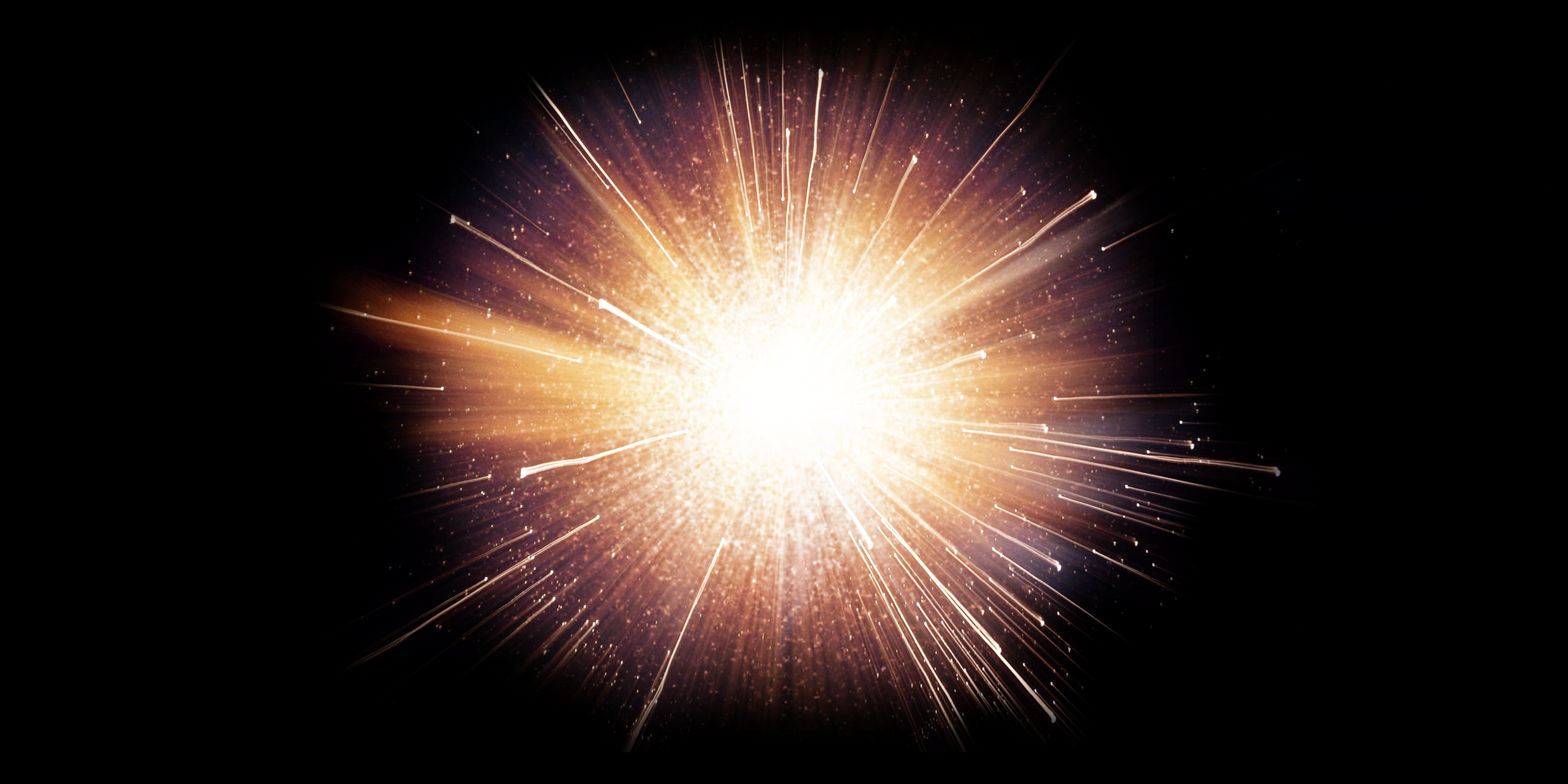Originally published 27 May 1996
“Professor, that stuff you spoke of in class this morning — about the beginning of the universe…”
Yes?
“Well, you know how you said that the universe began 10 or 15 billion years ago as an infinitely small point…?”
Yes, that would appear to be the case. An explosion from a point of infinite energy. Space and time expanding from nothing. Matter coalescing from cooling radiation. Stars, galaxies…
“To tell the truth, I’m having a hard time believing it. I mean, the idea that everything that exists today, the billions and billions of galaxies, stars, and planets, life, everything, was contained within something no bigger than a pinprick. I mean, come on…do you really expect me to swallow that?”
You will recall that I listed some pretty convincing evidence: The galaxies are racing apart, as from a primordial explosion; the amount of hydrogen and helium in the universe is just what theory predicts for a Big Bang beginning; and, not least, we see the flash of the Big Bang in every direction of space, with precisely the predicted characteristics.
“Yeah, I know. I understand most of that stuff. But I keep coming back to the idea of the whole universe contained within a pinprick. I mean, it’s impossible to imagine.”
It is difficult to imagine, I’ll grant you. But not impossible. Mathematically it works out. Mathematics is a big help to the imagination.
“It sounds impossible.”
Let me tell you a story. More than 2,000 years ago in Alexandria, Egypt, there were two fellows, named Eratosthenes and Aristarchus. They were excellent mathematicians.
Eratosthenes was a geographer. He imagined that the Earth was a sphere. He figured out how to measure the size of the sphere by using shadows cast by the sun at Alexandria and another place down the valley of the Nile. He used some mathematics that at the time was pretty advanced stuff — geometry, trig.
He calculated the size of the Earth and got it nearly dead-on, without ever leaving Alexandria. That’s what I mean about mathematics being an aid to the imagination.
Then Aristarchus used the size of the Earth to figure out the sizes and distances of the sun and the moon. He observed eclipses of the moon, and measured the time it takes the moon to move through the shadow of the Earth. Then he did some high-powered mathematics with circles and triangles. According to his calculations, the sun is many times bigger than the Earth.
Aristarchus told his fellow Alexandrians about his discovery. If the Earth is the size of a grape, he may have said, then the sun is the size of a melon. They laughed. Any fool can see that the sun is tiny compared to the vast, wide Earth. Why, for heaven’s sake, one can cover up the sun with the tip of one’s little finger, but travel across the Earth for weeks without ever leaving Egypt.
The sun bigger than the Earth? No way, it was simply impossible to imagine.
“But…”
And Aristarchus got one crucial observation wrong, through no fault of his own. In fact, the relative sizes of the Earth and sun are more like a grape and a washing machine, something every school child accepts today.
The moral of the story is — the “impossible” can turn out to be true.
“But the whole universe contained within a pinprick? It violates common sense.”
Einstein once said that common sense is the collection of prejudices we acquire by age 18. I’m not telling you to believe the Big Bang if you don’t want to, but keep your options open. One generation’s impossibility often turns out to be the next generation’s common sense.
“You’re asking me to take it on faith?”
Yes, on faith. But not on blind faith. As we saw this morning, there is impressive observational evidence. The calculations are based on Einstein’s general theory of relativity, which has many important successes to its credit. Then there’s the record of success by the successors of Eratosthenes and Aristarchus. Just think of all the scientific discoveries that were thought to be nonsense in their time. The Earth going around the sun. The evolution of life over billions of years. A chemical blueprint for a human being in the DNA of a single microscopic cell.
And besides, it’s a wonderful, wonderful story — a universe unfolding from a mathematical point!
“Yeah, it’s an wonderful story, all right. But…”
But?
“But I still don’t believe it.”



